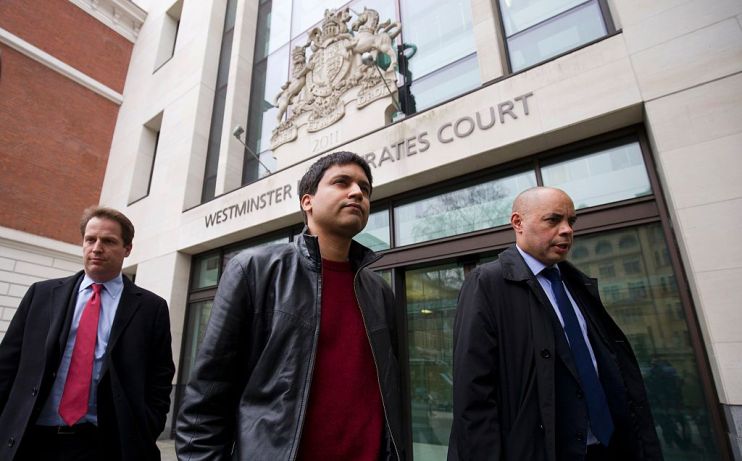A Machiavellian mastermind or a naïve kid? The story of the Flash Crash Trader

On a cold morning in April 2015, half a dozen FBI agents and police officers pulled up outside a modest semi-detached house in Hounslow to arrest a man they considered to be among the most prolific and dangerous market manipulators in the world.
Their target, Navinder Singh Sarao, had accumulated $70m buying and selling futures in his bedroom like he was playing a computer game. According to the American government, he had also helped spark a trillion-dollar market crash.
After his father shouted at him to come downstairs, Nav (as everyone called him) arrived in the hallway in tracksuit trousers and a dazed expression. Officers searching his bedroom found a single bed with a giant stuffed tiger, a games console and football memorabilia on the walls. The scene of the alleged crime was a home PC with a standard Internet connection. For the investigators who had been tracing Sarao for more than a year, it was difficult to fathom.
The first time I heard the name Navinder Sarao was that afternoon, when the US Department of Justice issued a press release announcing the arrest. I was an investigative journalist for Bloomberg focused on white-collar crime. In my career I’d covered everything from investment bankers nudging interest rates to Russian money launders to playboy scammers on the Cote d’Azur.
But Nav was unique.
According to the complaint, Sarao had devised a system to place huge numbers of buy or sell orders into US markets, enticing others to follow suit, then cancel them before they were executed — a brand new offence known as “spoofing”. By misleading other market participants about supply and demand, he was able to briefly nudge markets higher or lower while simultaneously buying and selling himself to capitalize on the move.
For five years, Sarao had used his makeshift machine, which he christened the “NAVTrader”, with remarkable success, raking in sometimes millions of dollars in a day. Bizarrely, he barely spent any of the money, squirreling it away instead in offshore vehicles which he gave names like the “NAV Sarao Milking Markets Fund”. He didn’t tell his family or friends about his winnings, he would later say, because he was worried they would treat him differently.
Calling around from Bloomberg’s London newsroom, I was amazed to discover that an old friend of mine had sat next to Nav when they were starting out as traders, in an unglamorous arcade above a Waitrose in Weybridge, Surrey — a far cry from the City of London and Canary Wharf.
Back then, Sarao had lived on McDonald’s meals, driven a moped, and worn a pair of industrial ear defenders to block out noise. He was also a trading prodigy who quickly built a bankroll in the millions while those around him could only watch on in awe.
Despite his rising wealth, Sarao, like many independent day traders, became frustrated when a new breed of high-frequency trading firms arrived, using a combination of lighting-fast computers and statistical analysis to jump ahead of market moves. With his profits dented, Sarao made a decision that would land him in the US government’s crosshairs. “If you can’t beat em you may as well join em, eh?” he wrote on a forum before sending a developer a blueprint for his spoofing machine.
In the aftermath of his Sarao’s arrest, there was an immediate backlash. For one thing, Nav was a British citizen who had never stepped foot in the US. For another, spoofing had only just been outlawed — Sarao was only the second ever individual to be charged with the offense, and the first outside the US.
The most contentious aspect of the case, though, was the Americans’ accusation that Sarao had helped trigger the so-called Flash Crash of 6 May 2010, when stocks abruptly plummeted five per cent in four minutes. Sarao traded instruments called S&P 500 “e-minis”, which track blue-chip American stocks. It’s a vast market, with somewhere in the region of $200bn worth of trades each day. The idea that a guy in his bedroom could upend it using a home computer stretched credulity.
Many in the market came to view Sarao as a kind of Robin Hood figure who took on the high-frequency trading firms at their own game and won. So, was he a Machiavellian mastermind or just a naïve kid with too much time on his hands? Was he responsible for the crash or a convenient scapegoat? Was he a common cheat, or David taking on the Goliaths?
The answer, I learned as I pieced together the story, was all of the above and more.
Flash Crash: A Trading Savant, A Global Manhunt and the Most Mysterious Market Crash in History (William Collins) is available now.
Main image credit: Getty